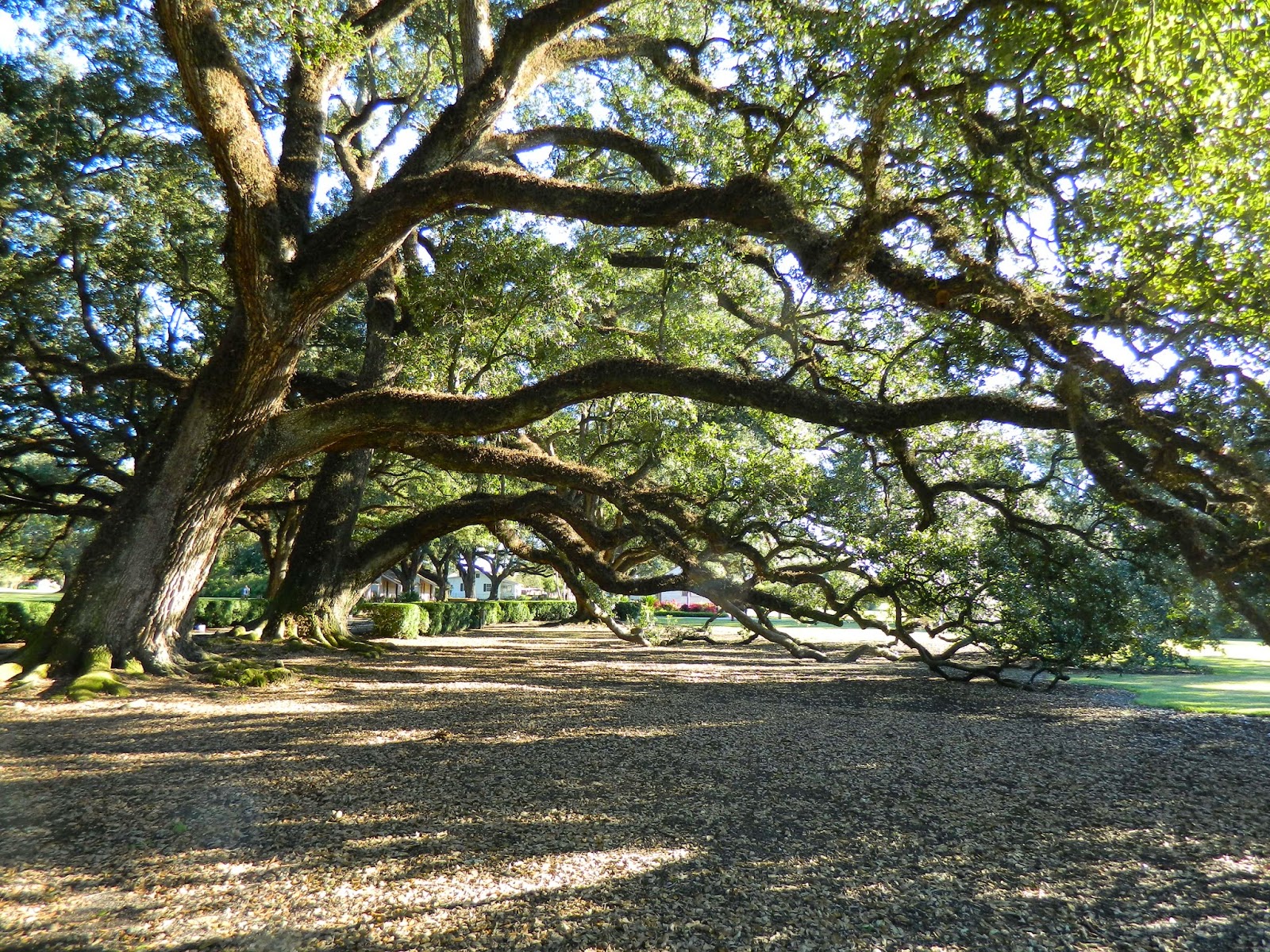Saturday morning, November 1. All we needed to do was drive out of busy downtown New Orleans and in about an hour we'd be at our peaceful little cottage on a sugarcane plantation along the mighty Mississippi. Easier said than done. I tried to follow the directions given by Google Maps, but at every turn, there was a police car and a barricade, even at freeway on-ramps, all thanks to a marathon. We can't get out of the city. We cannot get out . . .
Eventually, I drove far enough from the marathon that we found an open on-ramp. We were only delayed about an hour, but it seemed like an eternity. Finally arriving at Oak Alley Plantation, we walked the grounds, had lunch at the restaurant, and then took an educational 45 minute guided tour of the Big House led by a retired gentleman in Confederate Captain attire. Oak Alley is still a working sugarcane plantation of nearly 1175 acres, but 25 acres is owned by the Oak Alley Foundation, a non-profit that has preserved many buildings and provides history education to visitors. Our 100-year old cottage was nicely updated, but still maintained its charm and character. We only had a reservation for one night, but yearned for it to be more. Definitely a place worth re-visiting someday.
 |
| Oak Alley and the Big House. |
 |
| Sugarcane. It is planted in August and September, and harvested just over a year later, from October through December. The plants reach a height of about ten feet. |
 |
| Mississippi River levee and sugarcane fields. |
 |
| Just a hundred yards or so from the road are barges on the Mississippi River. |
 |
| A slave cabin. |
 |
| On the plantation is a very informative exhibit detailing the lives of slaves on the plantation, which was just one of hundreds of sugarcane plantations along the Mississippi River between Baton Rouge and New Orleans. Most are still in operation, though fortunately without slave labor. |
 |
| In contrast with the slave quarters is the Big House. |
 |
| The live oaks along this path are about 300 years old and lead from the front of the Big House toward the levee and the river just beyond. Cool air is naturally funneled through this alley toward the house, helping to keep it cool. |
 |
| A copper vat used to cook the sugarcane and produce molasses. |
 |
| Our tour guide, Bob, in the parlor of the Big House. |
 |
| During meals in the Big House, a young slave (probably about ten years old) would stand in the corner of the room pulling a rope attached to a pulley to move the large fan back and forth, helping keep the diners cool throughout their long meal. |
 |
| The white house is one of the cottages available for nightly rentals as part of the bed and breakfast operated on the plantation. We stayed in a similar cottage. |
 |
| The view behind our cottage was of sugarcane fields, one just planted this summer and one mature and ready for harvest. |




































Hard to fathom there are still so many plantations today. Sobering history. The stories those oak trees could tell.
ReplyDeleteKristi is right. Oh my, the stories abound in this environment.
ReplyDelete